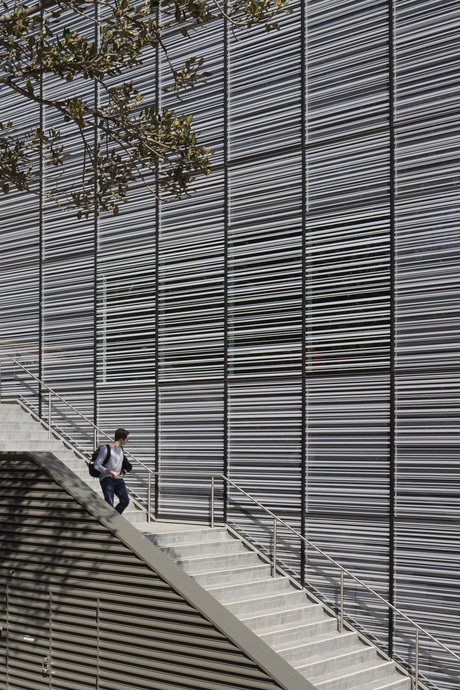Sydney Nanoscience Hub officially opens

The $150 million Sydney Nanoscience Hub, located at the University of Sydney, was officially opened today as part of a two-day conference on the theme of nanoscale science and technology.
Described by hub director Professor Simon Ringer as “the best building of its kind in our region”, the building will enable the design, fabrication and testing of devices all under one roof. It features teaching spaces alongside publicly available core research facilities that will support fundamental research as well as the work of start-ups and established industry.
The hub will also serve as the headquarters for the newly established Australian Institute for Nanoscale Science and Technology (AINST). AINST hosts some of the capabilities of the Australian National Fabrication Facility and the Australian Microscopy & Microanalysis Research Facility.
Researchers at the institute will contribute to two ARC Centres of Excellence: the Centre for Ultrahigh bandwidth Devices for Optical Systems (CUDOS) and the Centre for Engineered Quantum Systems (EQuS). The institute has also set up five flagship programs directly addressing key research themes:
- Measurement and Control at the Nanoscale — quantum-limited measurement and manipulation of nanoscale systems (eg, spin of fundamental particles).
- Quantum Simulation — developing quantum systems and control techniques to enable innovative computing approaches.
- Nanoscale Photonic Circuits — harnessing interactions between light waves, sound waves and matter at the nanoscale.
- New insights into disease and drug targets from endogenous biological nanoscale vesicles — deciphering the roles of microvesicles for disease pathologies using nanometre range biospectroscopic approaches.
- Nano-engineered reversible energy storage — designing and fabricating nanodomains of electroactive materials, using self-assembly and electrode patterning.
According to Professor David Reilly, research leader of the quantum measurement and control flagship, breakthroughs at the nanoscale hold the key to major advances in areas such as artificial intelligence and security.
“The challenge for us over the next few years is to take the physics results that we have probing the basic phenomena of quantum mechanics and see those results turn into technologies,” he said.
AINST Director of Community and Research Professor Zdenka Kuncic added the ‘rules of the game’ in nanoscience are still being worked out.
“Perhaps the most exciting aspect of nanoscience is the potential for new discoveries, including in health and medicine,” she said. “We have only scratched the surface of the new knowledge that remains to be revealed.”
Why are young plants more vulnerable to disease?
Fighting disease at a young age often comes at a steep cost to plants' growth and future...
Liquid catalyst could transform chemical manufacturing
A major breakthrough in liquid catalysis is transforming how essential products are made, making...
How light helps plants survive in harsh environments
Researchers from National Taiwan University have uncovered how light stabilises a key...




